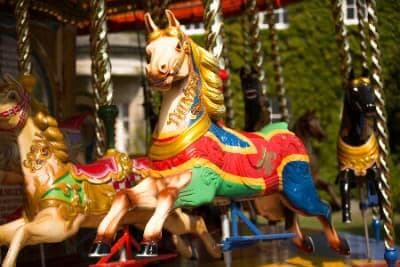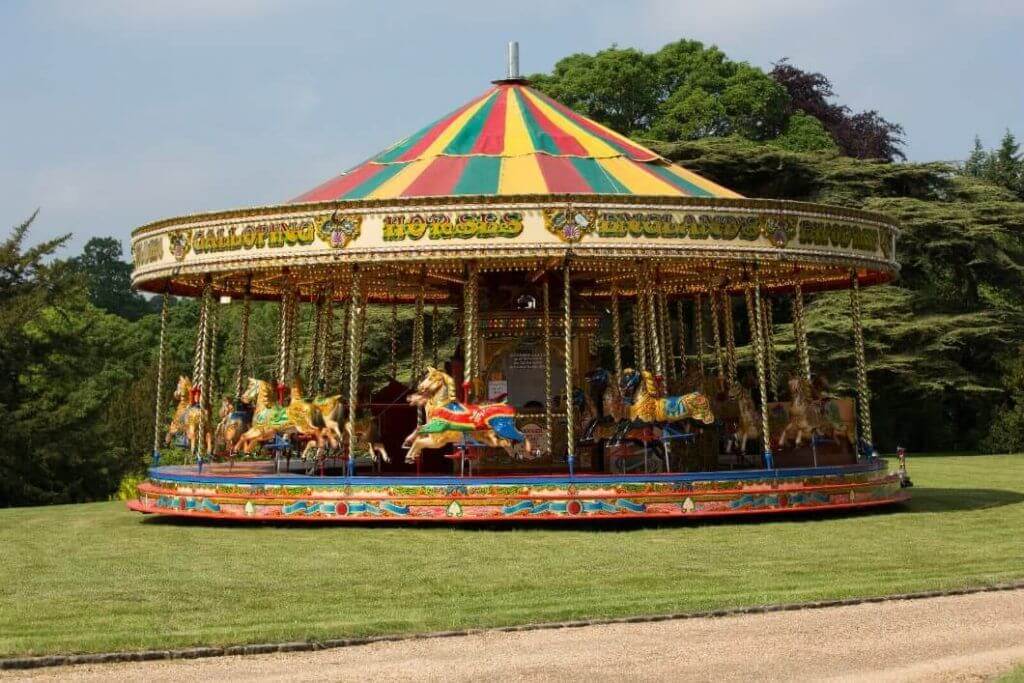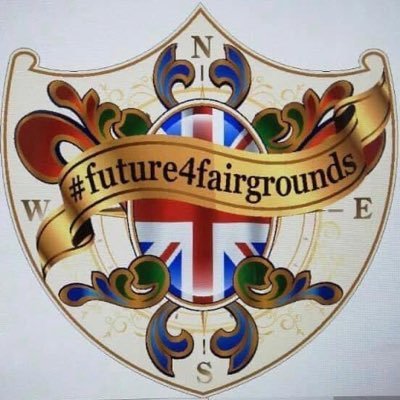One thing that the funfair industry is very poor at, is PR. Possibly because we tend to keep outsiders at arms length, many people have very little idea of how the industry works. Often we are regarded as gypsies (we are not, they are a totally separate ethnic/cultural group), there is this idea that funfairs just roll up willy nilly and set up on a piece of land they have no right to. That rides are thrown together by semi literate knuckle grabbing high school drop outs who have no idea what they are doing. So in an effort to spread a little fact, to counter some of the common fiction, we are going to answer some common funfair questions. If you have any others add them in the comment section and we will answer them for you.
This is the big one, and one that quite rightly you are entitled to ask. I will let the Health and Safety Executive provide the primary answer to this;
1.2 Risks to the public at fairs and amusement parks have proved to be quite small, on average, despite common perceptions to the contrary. For example, the risk of death from a typical session is estimated, on a pessimistic basis, at 1 in 83 million, which is:
a) about one twelfth that from a typical walk to get to the site;
Lets compare that 1 in 83 million figure.
Your risks of dying from the following pursuits;
- Car Accident – 1 in 200
- Train Crash – 1 in 65,000
- Shark Attack – 1 in 3.7 million
- Plane Crash – 1 in 7.6 million
- Struck by Lightning – 1 in 14 million
So does this mean that the experience is totally risk free. Sadly not. Modern rides are high speed complex pieces of machinery subject to immense stress and high G forces. Modern computerised design and testing systems mean that much of the dangers have been designed out. However over time, metal corrodes and weakens, systems can fail. So how is this counteracted.
ADIPS
The ADIPS scheme requires a comprehensive safety test every year for each piece of equipment. This covers electrical and mechanical safety, as well as non destructive testing such as x-rays or dye penetration to check for cracks and metal fatigue. Rides are also required to have a daily check scheme in place which is recorded every day.
The weakest link, as always, are humans. Checks rely on the operator carrying them out and taking action on faults that are found. Most rides are operated by the families that own them, so the incentive to carry these out correctly is not only possible large fines and/or jail, but also the massive loss of income if they are closed down.
The Human Factor
The one factor we don’t have control over, are the actions of our customers, more humans. In my 50 years on the funfair I have only ever been at a fair once where someone was sadly killed. What happened was that a young man climbed over a 6ft high safety rail to go and push his friends on a ride called the swinging gyms. Basically a box containing 4 of his friends, you rock the box back and forth to gradually gain height and go over the top.
He ran to give them a push, tripped and landed on the bottom of the ride, as the box came down it crushed him. Totally tragic, and totally avoidable by the poor victim. But it is hard to see what more the operator could have been expected to do.
Similarly we regularly have arguments on rides with minimum height limits. Parents want their offspring to go on the ride but they are not tall enough. Enraged they demand that they are allowed on because the parent knows best and evidently wants to willingly put their little darlings at risk!
2 Do They Carry Insurance?
Yes, two types. The first covers the actual equipment for damage or loss from theft/fire/accident. A typical modern ride easily costs in the mid six figure bracket. A few examples are in the millions bracket, so it isn’t feasible to chance losing investments on this level.
The other is public liability insurance, covering the riders and members of public. Most rides have two policies, the first carries £1 million cover. We than pay into a trade organisation fund which adds an additional £10 million to this.
Most local authorities require a minimum of £5 million, so our industry is well in excess of what is required.
3 Do Fairgrounds Just Set Up Anywhere?
Another really popular misconception. We have set up in high streets in the past, only to have a local resident actually call the council to ‘make them aware’ that the high street is ‘under occupation’ by the fair folk.
At the minute (2021) things are still a little strange what with Covid and all. Normally, on January 1st, we could usually list the dates and locations of all our events for that year. Indeed some like Nottingham Goose Fair, have been operating for hundreds of years.
Look, a large funfair is a major logistical exercise. To move dozens of ultra large vehicles around the country to set up an event easily costs tens of thousands of pounds. Realistically, is anyone going to throw that kind of money about in the hope that when they set up the council and police will allow them to stay. An expensive mistake if they don’t.
Additionally the event needs to be advertised, additional logistics like filling generator fuel tanks, or providing a suitable locations for the living quarters all need to be arranged.
Take a look at the picture below, there is no way something like that can just be randomly thrown together, that is planned months in advance.
4 Why Are Fairground Workers Covered In Tattoos And Have No Teeth?
Lol, I just love some of the funfair questions we are subject to. The funfair community is an incredibly close knit one. Most of us either know each other, or at the very least are only a couple of steps away from knowing each other.
I know of only one ‘funfair operator’ who has tattoos. A really nice lad, he wasn’t actually brought up on the fairground but married into it. That’s it. Tattoos just aren’t considered a socially acceptable thing within the industry.
‘Ah’, I hear you cry, Mark off the waltzers who I was snogging has them. Well, yep, Mark probably does. Thing is, Mark is a local lad that has been employed casually to help out at your local fair. Next week he will go back to being unemployed Mark.
We don’t have a particular problem with the practise, it’s just not one we engage with as a rule.
A noted exception has to be mentioned though, a few generations ago, when times were particularly hard, one lady struggling to feed her kids, actually had her entire body, sans her neck face and hands, tattooed. She went on to appear as the main exhibit in her own sideshow.
The pain must have been incredible, they were a hardy breed back then.
Regarding the teeth thing, we actually do visit dentists, and I can’t honestly say that funfair dentition is any different to non funfair dentition.
5 Do You Have Things Like Running Water And Electricity?
Out of the many funfair questions we get asked, these ones really do bug us. No we eat cold food, don’t wash and go to bed when it gets dark. Or at least some seem to believe so. Pictured below is the interior of a modern caravan. Fully furnished and connected to electricity, gas and running water. Oh, and flushing toilets, probably the same make as in your house.
Gas, it probably slightly different as we tend to use bottled gas or LPG, rather than a fixed connection, which tends to be difficult with all the moving about and such.
Storage space tends to be built into sofa’s and various nooks and crannys as well as the cupboards and wardrobes. The end result is quite often more room and storage available than a typical modern house. Most caravan’s have entire sections that slide out to make the actual home much bigger than it is when being transported by road.
I remember a few years back in Holland, actually seeing a double deck caravan, IE it had a top floor, though that doesn’t seemed to have made it to these shores yet.
If there are any others you know of leave a comment and we will add to the answers.



